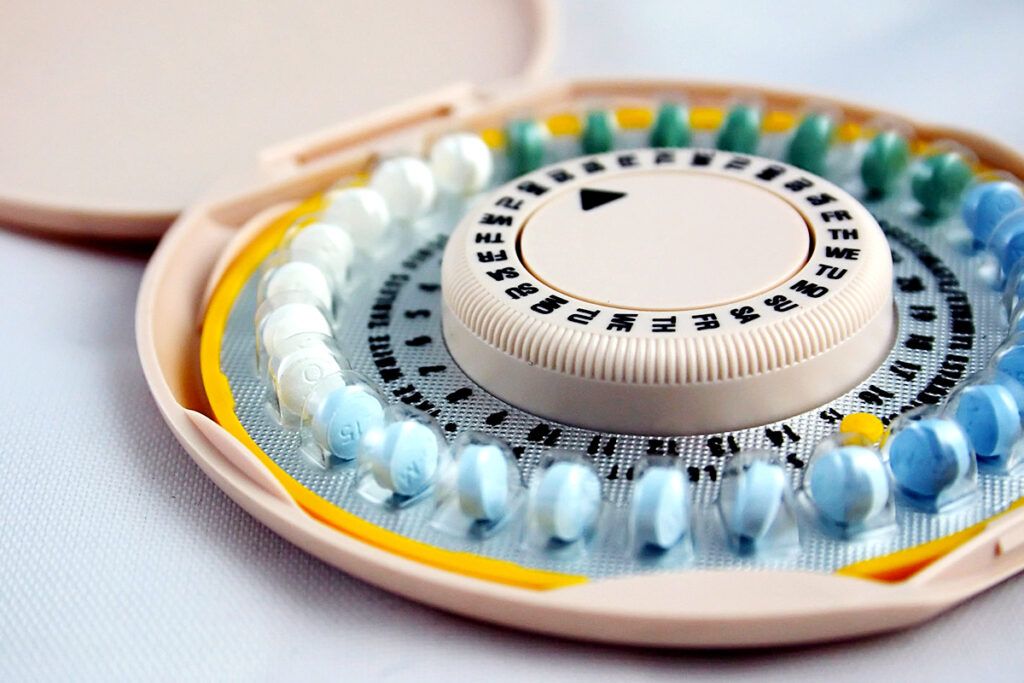It’s possible to get pregnant very soon after having a baby, so it’s important to understand your postpartum birth control options.
Most birth control methods are generally considered safe to begin after giving birth. But hormonal birth control methods containing estrogen can sometimes affect your breast milk supply and increase the risk of several health conditions.
Unless a healthcare professional advises it, you should not use hormonal birth control until you are several weeks postpartum.
When should you begin using birth control after pregnancy?
The American College of Obstetricians and Gynecologists (ACOG) says that if you are not chestfeeding, you can ovulate again within a few weeks of childbirth. Once an egg is released during ovulation, it’s possible to get pregnant.
Ovulation may be delayed if you are nursing but will usually return by about 6 months, according to ACOG. And because ovulation usually happens 2 weeks before menstruation, it’s possible to get pregnant even if you haven’t had your period yet.
It is recommended that you wait 18 months after giving birth before having another baby to provide the uterus time to heal.
What is the best form of birth control after having a baby?
Many forms of birth control are effective and safe to use after having a baby. The type of contraception used depends on the unique needs of each person.
There are several forms of birth control available, such as:
Birth control pill
Taken as a capsule that you swallow, the birth control pill works by adjusting the hormones in your body so that you do not ovulate.
According to a 2019 research review, people should avoid birth control pills containing estrogen during the 6 weeks after childbirth. This is because there is an increased risk of blood clotting during this stage.
Several other birth control pills are available that do not contain estrogen. One of the most commonly used methods is the mini pill, a progestin-only pill.
The mini pill stops ovulation and is an effective way to prevent pregnancy. It is usually available only under a brand name, such as:
It’s important to know that mini pills can cause several side effects, such as:
- breast tenderness
- headache
- nausea
- increased risk of yeast infection
Intrauterine device (IUD)
An IUD is a T-shaped device that a doctor inserts into a person’s uterus.
It is available in two forms. The hormonal form releases the hormone progestin into the uterus, while the nonhormonal form releases copper. Both methods stop sperm from fertilizing the egg.
The IUD is considered one of the most effective forms of birth control, with less than 1% of births for every 100 people who use it.
It can be inserted right after vaginal birth, after a cesarean section, or at your first postpartum visit with a doctor.
Side effects of IUDs can include:
- headache
- nausea
- spotting
Vaginal ring
The vaginal ring is a small and flexible ring that is placed inside the vagina. It releases the hormones estrogen and progestogen into the bloodstream to stop pregnancy from occurring.
While it does contain estrogen, it has a lower dose than the pill, so you are less likely to experience side effects such as an increased risk for blood clotting or yeast infections.
Examples include EluRyng and Haloette, which are both generic versions of the vaginal ring, Nuvaring.
The vaginal ring is easily reversible and has fewer side effects than oral contraceptives. Some side effects can include:
- headaches
- vaginal discharge
- breast tenderness
Condoms
Condoms are considered a barrier method of contraception, as they block sperm from reaching an egg. This form of contraception has several benefits, such as being able to use it anytime after childbirth. It can also prevent sexually transmitted infections.
However, ACOG estimates condoms to be one of the least effective forms of birth control.
Lactational amenorrhea method (LAM)
LAM refers to the use of chestfeeding as a form of birth control. While it isn’t a long-term solution, it may prevent pregnancy up to 6 months after giving birth.
Yet it may only be effective if there are at most 4 hours between feedings during the day and 6 hours at night. It is also unclear whether pumping decreases the effectiveness of LAM.
Sterilization
Sterilization is a permanent way to prevent pregnancy and is considered safe by the medical community. As it involves surgical removal of the fallopian tubes, counseling is usually required beforehand, which may take longer than other methods.
The benefits include a low risk of complication, with no need to use any other contraceptive measure.
It has side effects such as a slight risk of bleeding and infection. And because this is a permanent solution, it should be carefully considered.
If you are unsure which birth control method may be right for you, consider speaking with a healthcare professional, such as a gynecologist, who can help you identify the most suitable method for your individual situation.
If you need help covering the cost of medications, the free Optum Perks Discount Card could help you save up to 80% on prescription drugs. Follow the links on drug names for savings on that medication, or search for a specific drug here.

